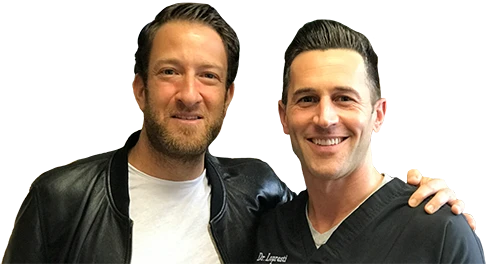Revolutionizing Hair Loss Treatment – Hair Cloning
When it comes to addressing hair loss, the market is flooded with claims of near-instant results and miraculous solutions. Unfortunately, sometimes these promises fall short, leaving individuals grappling with the seemingly inevitable onset of hair loss. However, recent advancements in scientific understanding, particularly spearheaded by hair transplant surgeon Dr. Matthew Lopresti, offer a glimmer of hope and a potential game-changer in the field.
Ever heard of HairClone®’s hair follicle banking? It’s pretty groundbreaking stuff. Right now you can take advantage of hair follicle banking, which can do wonders for those looking to add volume to thinning hair. By getting started early and banking these cells, you’re essentially hitting pause on their aging process before it even begins. It’s akin to women freezing their eggs or embryos for later family planning; by banking your hair follicles now, you’re securing an option that might not be as viable as you age.
Leonard Hair Transplant Associates is proud to be among the few practices offering this cutting-edge service. And when the technology for implanting cloned cells becomes available in the near future, you’ll be among the first to benefit.
“Understanding the root cause of hair loss is crucial in developing effective treatments,” explains hair transplant surgeon Dr. Matthew Lopresti. “It’s not just about replacing lost hair, but about addressing the underlying mechanisms that lead to hair thinning and balding.”
Male pattern hair loss, affecting 80% of men, has long been a puzzle for researchers. “Balding is not simply about losing hair, but rather, it’s a process of hair miniaturization,” Dr. Lopresti emphasizes. “The hair follicles shrink over time, making them less visible.”
At the heart of this phenomenon are dermal papillae cells, specialized cells that play a crucial role in hair formation and growth. “Dermal papillae cells are like the architects of hair growth,” says Dr. Lopresti. “When these cells are depleted, hair follicles become smaller and thinner, leading to baldness.”
 The culprit behind this depletion? Dihydrotestosterone (DHT), a hormone derived from testosterone, which targets and kills dermal papillae cells. “Understanding the role of DHT in hair loss has been a major breakthrough,” notes Dr. Lopresti. “It allows us to develop targeted treatments that can block its harmful effects.”
The culprit behind this depletion? Dihydrotestosterone (DHT), a hormone derived from testosterone, which targets and kills dermal papillae cells. “Understanding the role of DHT in hair loss has been a major breakthrough,” notes Dr. Lopresti. “It allows us to develop targeted treatments that can block its harmful effects.”
Recent research has shed light on the genetic origins of balding, tracing it back to early development in the womb. “The pattern of hair loss is predetermined by genetic factors,” Dr. Lopresti explains. “Where you’ll lose hair is determined from the earliest stages of development.”
With the understanding that dermal papilla cells are at the core of balding, the race is on to find effective ways to replace them. Hair cloning, also known as hair multiplication, emerges as a frontrunner in this quest. Dr. Lopresti, associated with HairClone, emphasizes the potential of hair cloning as an early intervention before significant balding occurs, providing a natural-looking solution. “Hair cloning offers a revolutionary solution to hair loss,” says Dr. Lopresti. “By multiplying healthy dermal papillae cells and reintroducing them into the scalp, we can potentially restore hair growth in balding areas.”
The process begins with harvesting and banking follicles containing healthy hair. “The younger the follicles, the better the outcome,” advises Dr. Lopresti. “Early intervention is key to maximizing the effectiveness of hair cloning.”
Next, dermal papillae cells are isolated and multiplied in a laboratory setting. “With advancements in cell culture techniques, we can generate a large quantity of dermal papillae cells from a single follicle,” Dr. Lopresti explains.
The final step involves reimplanting the multiplied cells into the scalp, where they can stimulate new hair growth. “While regulatory approval is pending, early clinical data is promising,” assures Dr. Lopresti. “Hair cloning holds the potential to transform the landscape of hair restoration.”
The option to bank hair follicles for future cloning is available worldwide, offering hope to those grappling with hair loss. “Investing in the preservation of hair follicles today could pave the way for tomorrow’s hair restoration,” concludes Dr. Lopresti. “The future of hair cloning looks promising, heralding a new era in the fight against baldness.”




